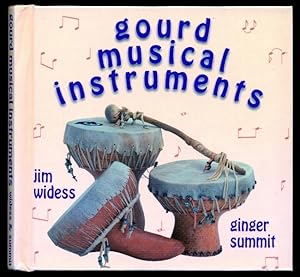the caning shop berkely california (1 results)
Product Type
- All Product Types
- Books (1)
- Magazines & Periodicals
- Comics
- Sheet Music
- Art, Prints & Posters
- Photographs
- Maps
-
Manuscripts &
Paper Collectibles
Condition
- All Conditions
- New
- Used
Binding
- All Bindings
- Hardcover
- Softcover
Collectible Attributes
- First Edition
- Signed
- Dust Jacket
- Seller-Supplied Images
- Not Printed On Demand
Seller Location
Seller Rating
-
Gourd Musical Instruments
Published by The Caning Shop, Berkely, California, 2000
ISBN 10: 097003380XISBN 13: 9780970033802
Seller: Don's Book Store, Albuquerque, NM, U.S.A.
Book
Trade Paperback. Condition: As New. Dust Jacket Condition: No Dust Jacket. DuFlon, Andrea - Book Design (illustrator). 86 Pages. Beautiful as new condition with no defects. A small hardback with pictorial glossy laminated boards complete with CD. This book describes 40 different musical instruments made from gourds. The compact disk has 45 different tracks and 73 minutes of music so that the reader can hear what the 40 different gourd instruments sound like. All of these instruments are simple to build and require only very modest hand tools-ones you already are likely to own. You will be amazed at the variety of instruments you'll hear, as well as surprised by the quality of their sound. Instruments represented range from the Afro-Brazilian Berimbau, to tiny gourd flutes attached to the rumps of homing pigeons in China, to gourd didgeridoos to the original gourd banjo. Each two facing pages of the book describes in detail the audio track of the compact disk with informative text and one or more color photographs. Today's Western orchestra contains instruments of sophistication and beauty. Centuries of adapting, testing and perfecting have produced acoustic musical organs whose sound is unsurpassed. For most of us, constructing one of these instruments is well beyond our capabilities and our skills. But all of these instruments are rooted in a much simpler past. When skills were less technical and tools were less exact nature provided the most essential part of the instrument - the gourd resonator. The gourd, a close cousin to the pumpkin and zucchini, is a squash with an extremely hard shell. Closely associated with humans for over 11,000 years, it is one of the earliest natural containers. The qualities of the shell of the gourd made it very suitable for carrying food and liquids as well as providing a natural resonating chamber for rattles, rasps and drums. For most instruments, the majority of the work in construction is centered around building the box, or the resonator. Gourds, being natural resonators, only require that they be cut open and cleaned. Presto! You have a banjo body, a drum frame, a bell for a wind instrument or a hollow tube for a flute.


